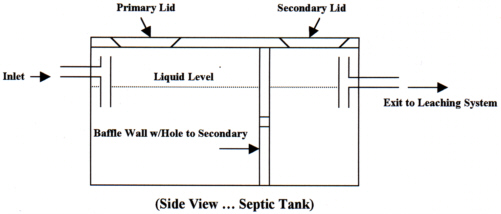
How a Septic System works. |
Everything from the home first enters the Septic Tank. Sewage enters at the top portion of the Septic Tank and exits at the top portion of the tank. It is in this liquid environment that bacteria do its work of breaking down most solids into a liquid called effluent. Effluent exits the tank and enters the leaching system where it percolates (seeps) back into the ground. |
 |
Septic Tanks are designed to handle all the normal, daily (24 Hour) effluent flow which a household can produce. There are advantages to installing a larger Septic Tank. Longer detention times, (due to the larger capacity), permit better separation and less carry-over of scum and sludge and tend to prolong the life of the leaching system.
|